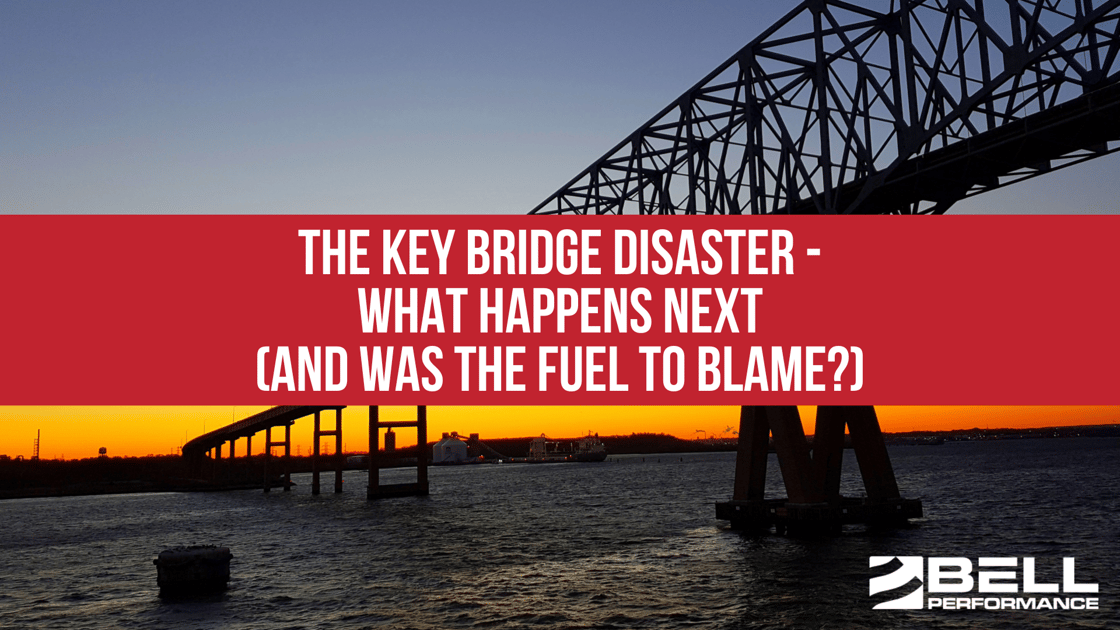The Key Bridge Disaster - Trying to Assess the Aftermath
Summarizing what they know thus far... They recovered the ship’s “voyage data recorder” (VDR), sometimes referred to as the black box because of its...
3 min read
Erik Bjornstad : Mar 27 2024

One of the nation’s worst infrastructure disasters now threatens to put a major snarl in our country’s complex web of shipping. On Tuesday, the massive container ship Dali lost power while leaving the Baltimore harbor, crashing into the critical Francis Scott Key Bridge over the Patapsco River. The dramatic sudden collapse of the bridge created the video seen around the world.
Every major news outlet, from CNN (“Cargo Ship Lost Power Before Colliding With Baltimore Bridge; 6 Presumed Dead”) to The Washington Post (“Six People Presumed Dead After Baltimore Key Bridge Collapses, Coast Guard Says”) to far-off outlets like the BBC (“Data Recorder Recovered From Ship In Baltimore Key Bridge Crash”) and Al Jazeera (“US Divers Recover Data Recorder From Crashed Ship In Baltimore”) are all keeping us apprised to the latest details to be concerned about.
Starting at 12:44 am on Tuesday, the container ship Dali starts leaving the port of Baltimore. It carries 3,000 containers of cargo along with a crew of 22 (plus 2 pilots). At 1:26 am, still not having left the port but nearing the bridge, the Dali starts straying off course and sends out a distress ‘mayday’ signal (while telling the dispatcher that they might be hitting the bridge pretty soon). This means the ship had lost power at that point. That signal was a critical event that saved many many lives because it gave bridge authorities a 90-second window (which they took) to stop cars from going over the bridge. Just 2 minutes later, at 1:28 am, the Dali collides with the Francis Scott Key Bridge, triggering its dramatic collapse.
The Key Bridge itself is a major thoroughfare for 30,000 people per day who use it as part of the larger Baltimore Beltway. When it was built in the late '70s, it took five years. Rebuilding it isn’t going to take that long, but it still won’t be a quick process, nor will it be inexpensive.
Given estimates of 18 months or more to rebuild the Key Bridge, the United States now faces some key problems with its shipping infrastructure. The Port of Baltimore isn’t the nation’s largest, but it is in the top 10, and serves as a particularly important port for both cars (it’s the nation’s largest port for “roll-on roll-off cargo”) and coal exports. It handles the most farm and agricultural equipment in the country. Oh, and don't forget Baltimore handles more agricultural products than any port in the country (1.2 million tonnes of sugar and salt, anyone?) The freight going through the port is valued at $80 billion per year.
Now, all that cargo is going to have to go someplace else. It is a blessing that our nation’s shipping logistics system came out of the pandemic in a healthier state than it was before. We have layers of redundancy built in that were kind of forced into the system during that time period. This disaster is going to test all of them.
The first question is, what happens to the ships that can’t get in? They will be diverted to New York and New Jersey. They also have to deal with all the containers still waiting to go somewhere - those won’t be leaving Baltimore harbor any time soon. Transportation managers are already hard at work setting up arrangements to get them out of there.
There are some big questions that will need to be answered in the coming days. A primary one is, what happened to cause the power outage? They do know that the ship is supposed to have a backup generator system, but it doesn’t appear that the backup powered the propulsion system. Why was that?
 Some media outlets, led by the Wall Street Journal’s initial reporting, are brokering the hypothesis that bad fuel was the primary contributor to the disaster. In the distress call from the ship, they cited that they had lost control of the ship and that “loss of propulsion” was to blame. How would bad fuel have factored into this? That’s a question lots of people, including those of us in the fuels industry, are keenly interested in the answers to.
Some media outlets, led by the Wall Street Journal’s initial reporting, are brokering the hypothesis that bad fuel was the primary contributor to the disaster. In the distress call from the ship, they cited that they had lost control of the ship and that “loss of propulsion” was to blame. How would bad fuel have factored into this? That’s a question lots of people, including those of us in the fuels industry, are keenly interested in the answers to.
If it was bad fuel, questions come out of that. For a few years now, regulations have required container ships to use cleaner #2 diesel fuel for their power until they are x nautical miles away from shore (then they can switch to heavier fuel). What kind of fuel problems might have contributed to such a catastrophic failure? We can speculate in several ways (microbial?) but we won’t know anything for a while. So we’ll keep an eye out for updates.
The very possibility of bad fuel contributing to this disaster should be sobering to all of us who have backup fuel that we need to maintain.
Summarizing what they know thus far... They recovered the ship’s “voyage data recorder” (VDR), sometimes referred to as the black box because of its...
When it comes to the dual goals of maintaining fuel quality and preventing costly equipment failures that might be fuel-related, proper fuel sampling...
In its report released in 2016, the EPA reminded us that there are over 100,000 diesel fuel storage tanks across the country. That’s a lot of tanks...